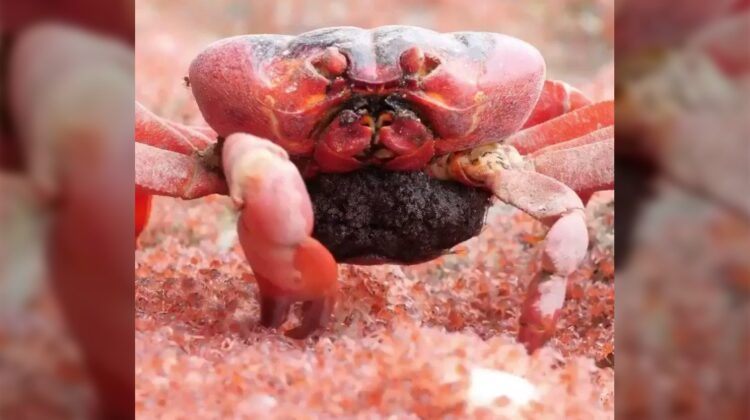
Every year, at the start of the wet season, mature red crabs on Christmas Island migrate to the coast to spawn. They can only spawn their eggs once a month, and the timing of their spawning is linked to the tides. This can overlap with the previous month’s babies returning to the island, providing a feast for opportunistic crabs.
The red crab migration is a truly spectacular event. Millions of crabs make their way to the coast, often crossing roads and highways in the process. The crabs are so numerous that they can create traffic jams and even cause power outages.
Once the crabs reach the coast, they mate and spawn. The females then return to the forest, while the males stay behind to guard the eggs. The eggs hatch after about six weeks, and the tiny crab larvae are swept out to sea.
The crab larvae spend the next six to nine months living in the ocean. During this time, they undergo a series of transformations and eventually grow into adult crabs. The adult crabs then return to the island to start the cycle all over again.

The red crab migration is an important part of the Christmas Island ecosystem. The crabs play a vital role in the food chain, and they also help to aerate the soil and spread seeds. However, the crabs are also a food source for a number of predators, including birds, lizards, and snakes.

One of the most interesting aspects of the red crab migration is the fact that it can overlap with the previous month’s babies returning to the island. This provides an opportunity for opportunistic crabs to chow down on infants. This cannibalism is a natural part of the ecosystem, and it helps to control the population of red crabs.
The red crab migration is a truly unique and amazing event. It is a reminder of the power of nature and the interconnectedness of life on Earth.

Leave a Reply